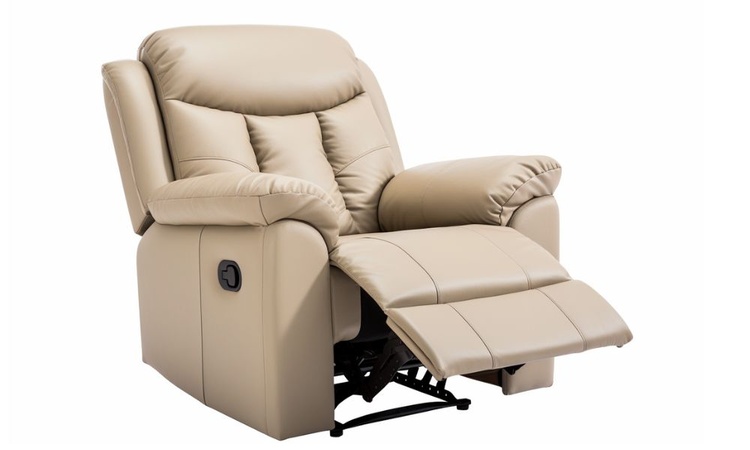What You Need to Know Before Buying a Recliner Chair
Recliner chairs offer comfort and functionality for any living space, making them a popular furniture choice for relaxation. However, selecting the right recliner requires careful consideration of various factors to ensure it meets your needs and provides lasting satisfaction. From size constraints to material quality, making an informed decision involves understanding the key elements that contribute to a recliner's comfort, durability, and functionality. Before investing in this significant piece of furniture, it's important to familiarize yourself with essential considerations that many overlook during the purchasing process.

Common Mistakes to Avoid When Choosing a Recliner Chair
One of the most frequent errors consumers make is purchasing a recliner without measuring their available space. Recliners require additional room for the reclining mechanism to function properly, often needing 1-3 feet of clearance behind the chair. Another common oversight is neglecting to test the chair’s comfort before purchase. What feels comfortable during a brief store test might not provide adequate support for extended periods, especially for those with back problems or mobility issues.
Many buyers also focus exclusively on aesthetics while overlooking the recliner’s functional mechanisms. Some mechanisms require more physical effort to operate, which may be challenging for elderly users or those with limited strength. Additionally, buyers frequently underestimate the importance of frame construction, opting for less expensive models that use particleboard or plastic components rather than hardwood frames that offer superior longevity.
Key Factors to Compare: Comfort, Durability, Size, and Adjustability
When evaluating recliner options, comfort should be your primary consideration, but it’s highly subjective and dependent on individual body types and preferences. Look for adequate lumbar support, appropriate seat depth, and cushioning that matches your firmness preference. The upholstery material significantly impacts both comfort and durability—leather offers elegance and longevity but may feel cold initially and require regular conditioning, while fabric options provide warmth and variety but may stain more easily.
Size considerations extend beyond the physical dimensions of the chair to include the scale relative to other furniture pieces in your room. A recliner that’s proportionally appropriate will create visual harmony in your space. Regarding adjustability, modern recliners offer various mechanisms, from traditional manual levers to electronic controls with multiple position settings. Some premium models even include zoned adjustment capabilities that allow different positions for the head, back, and feet simultaneously.
The chair’s frame construction directly influences its durability. Hardwood frames, particularly those made from kiln-dried wood with reinforced corners, typically offer the greatest longevity. Metal components should be heavy-gauge and feature smooth movements without catching or squeaking, which can indicate potential future failures.
Essential Pre-Purchase Checks for Long-Term Recliner Satisfaction
Before finalizing your decision, thoroughly test the recliner’s mechanism in all positions. The transition should be smooth and relatively quiet, with secure locking in each position. Examine the chair in its fully reclined state to ensure it provides proper support throughout your body without creating pressure points or gaps in support.
Investigate the warranty terms carefully, paying special attention to what’s covered and for how long. Quality recliners typically come with warranties ranging from 1-10 years, with mechanisms and frames often covered longer than upholstery or cushioning. If purchasing from a retailer, inquire about their return policy and whether they offer in-home trials, which can be valuable if the chair feels different in your home environment.
For those with specific health concerns, consult healthcare providers about recommended features. Individuals with circulation issues may benefit from models with elevated footrests, while those with back problems might require specific lumbar support configurations. Additionally, consider the chair’s maintenance requirements based on your lifestyle—some materials and mechanisms demand more frequent attention than others.
Understanding Recliner Types and Their Intended Uses
Different recliner styles serve varied purposes and suit different living situations. Traditional two-position recliners offer basic functionality with upright and reclined positions, while rocker recliners add a gentle rocking motion that’s particularly appreciated by parents of young children. Wall-hugger recliners require minimal clearance and work well in apartments or smaller rooms, whereas lift recliners provide assistance standing up and are beneficial for those with mobility challenges.
Home theater recliners often include additional features like cup holders and USB ports but may sacrifice some comfort for these conveniences. Consider how you’ll primarily use the chair—whether for occasional relaxation, daily extended use, sleeping, or specific health benefits—as this should guide your selection process.
Pricing Considerations and Value Assessment for Recliners
Recliner pricing varies significantly based on construction quality, features, and brand reputation. Entry-level recliners typically range from $250-$600 but may have limited adjustment options and less durable components. Mid-range options ($600-$1,200) generally offer better frame construction, superior cushioning, and more reliable mechanisms. Premium recliners ($1,200-$3,000+) provide enhanced durability, premium materials, and often include advanced features like power recline, heating, massage functions, or smart home integration.
| Recliner Category | Price Range | Typical Features | Expected Lifespan |
|---|---|---|---|
| Entry-Level | $250-$600 | Basic manual recline, limited positions, synthetic upholstery | 3-5 years |
| Mid-Range | $600-$1,200 | Improved mechanisms, better cushioning, fabric or basic leather | 5-10 years |
| Premium | $1,200-$3,000+ | Power recline, multiple positions, genuine leather, extended warranties | 10+ years |
| Luxury/Specialized | $3,000-$5,000+ | Medical-grade features, custom sizes, premium materials, advanced technology | 15+ years |
Prices, rates, or cost estimates mentioned in this article are based on the latest available information but may change over time. Independent research is advised before making financial decisions.
When evaluating value, consider the cost per year of expected use rather than just the initial price. A $1,200 recliner that lasts 10 years ($120/year) may offer better value than a $500 model requiring replacement after 3 years ($167/year). Factor in potential repair costs and whether replacement parts are readily available, particularly for mechanisms that experience the most wear.
Making Your Final Decision Based on Balanced Priorities
The perfect recliner represents a balance between comfort, quality, aesthetics, and budget. Consider creating a prioritized list of must-have features versus nice-to-have options. Visit multiple retailers to compare similar models and don’t hesitate to negotiate, especially on floor models or during sales events. Many manufacturers offer customization options that may provide a better fit for your specific needs without requiring a complete upgrade to a more expensive model.
Remember that the best recliner is one that serves your particular needs rather than simply having the most features. By carefully considering these factors and avoiding common purchasing pitfalls, you’ll be better positioned to select a recliner chair that provides comfort and satisfaction for years to come.




